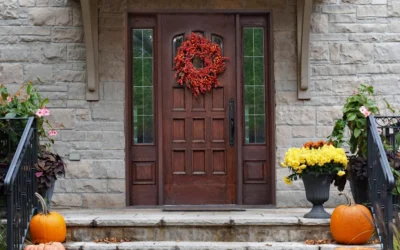Building a new home is an exciting, yet costly, endeavor given that the US median home price is $415,000 (October 2024). One smart financial strategy when building a home is to offset interest rates and monthly payments with a mortgage buy-down — a method that eases the financial burden of your initial mortgage payments for the first few years. You can buy down points yourself or you’ll find many home builders offer a mortgage buy-down incentive, potentially saving you hundreds of dollars per month while you settle into your new home.

What is a Mortgage Buy-Down?
A mortgage buy-down involves paying an upfront dollar amount at closing to lower the interest rate on your mortgage, either temporarily or permanently. This can make your monthly mortgage payments more manageable, particularly in the early years of your loan.
Temporary buy-downs are especially popular with home building companies to incentivize homeowners to build with them. These incentives are typically a 2-1 temporary buy-down, lowering the interest rate for a set period of two years before adjusting to the regular rate.
Tony Pogrelis, Branch Manager at Guild Mortgage in Troy, Missouri, explains what a buy-down could equate to in monthly savings. “Let’s look at an example. You are financing a $450,000 home with a $400,000 mortgage at a 7% interest rate, fixed for 30 years. With a two-year builder buy-down, you can potentially lower your monthly mortgage by $520 per month for the first 12 months, then approximately $260 per month in year two. That’s a savings of just over $9400, paid for by the builder, that you can use to pay off other loans, invest, or save for when your mortgage returns to the regular amount.”
Temporary Buy-Down: Common forms include the 2-1 buy-down or 3-2-1 buy-down, where the interest rate is reduced for the first two or three years and then reverts to the original rate. For example, in a 2-1 buy-down, the rate is lowered by 2% in year one, 1% in year two, and then returns to the standard rate for the remainder of the loan.

How a Mortgage Buy-Down Could Benefit Homeowners Building a New Home
When building a new home, a mortgage buy-down can be a useful tool to manage monthly payments in the early stages of settling into your new space. It can provide financial relief when you need it most, but it’s important to carefully assess the upfront costs if you are buying down points yourself and the ability to cover future payment increases.
If your homebuilder offers to pay for a mortgage buy-down as an incentive, this is a great deal. As the homeowner, you won’t have to pay for it — the builder covers the cost to reduce your interest rate, allowing you to enjoy lower monthly payments for two to three years without the upfront expense.
In addition to the significant monthly mortgage payment savings, here’s how a mortgage buy-down could benefit you and your family as you embark on building a new home.
- Easier Affordability: Lower mortgage payments for the first few years might make a more expensive home accessible.
- Smoother Cash Flow: If you’re buying or building a new home while selling your current one, a buy-down, especially when paid for by the builder, could ease the financial burden during this transition.
- Financial Breathing Room: Building a new home often involves juggling multiple expenses, including construction costs, furnishings, and final touches. Lowering your initial mortgage payments gives you financial breathing room while you settle into your new home.
- Lower Payments Help with Additional Expenses: The first few years in a new home can come with additional expenses such as landscaping, finishing a basement, or upgrading certain features. Reducing your mortgage payments for the first few years can help manage these extra costs.
- Ease Transition from Construction Loan to Permanent Financing: Homeowners building a new house might start with a construction loan and then move to permanent financing once the house is completed. A buy-down can ease the transition by lowering the initial monthly payments, helping you adjust to the new financial landscape after construction wraps up.

Potential Mortgage Buy-Down Downsides to Consider
- Temporary Buy-Down Risks: With temporary buy-downs, your payments will increase after the first few years. If your financial situation doesn’t improve or other costs pile up, this could lead to difficulty in keeping up with mortgage payments down the road.
- Upfront Costs: If you’re covering the cost of the buy-down yourself, the upfront fee might be difficult to find, especially when you’re already managing various homebuilding expenses.
- You Might Not Stay Long Enough: If your new home is more of a temporary residence (perhaps you plan to sell after a few years), a self-paid buy-down might not be worth the investment. In such cases, a conventional mortgage or other cost-saving strategies could be a better fit.
Learn More About Our Easy Build Program
What’s Better: A Larger Down Payment or a Buy-Down?
We asked Tony, “What’s better — a larger down payment, which reduces the loan amount, or an upfront buy-down?”
He replied, “If you were to use the buy-down amount in one lump sum to reduce the total loan amount, the monthly savings would likely be small. For example, if you used the $9400 from the example above toward the down payment, reducing the mortgage amount, you would save around $54 per month. On the other hand, the savings from a builder’s buy-down can be put to immediate use and then, depending on interest rates, it may make sense to refinance after the buy-down period to lower your monthly payment. The immediate buy-down savings tends to go further with people’s finances than the $54 per month.”
What About a Permanent Mortgage Buy-Down?
When using a permanent mortgage buy-down, the interest rate is reduced for the entire loan term. This is achieved by paying more upfront, usually 1% of the loan amount per “point,” which can reduce the rate by around 0.25% for the life of the loan. Is it a good idea? Let’s look at an example.
If you pay to buy-down from 7% to 6.5% on a $400,000 mortgage, you’re looking at between $8,000–10,000 upfront. This is money you will not get back when you sell and the monthly difference in your mortgage payment will only be about $50-60. That’s a large financial outlay that will take many years to recoup. Given all the mortgage variables, it is important to discuss every option with your mortgage broker to learn what is best for your situation.

Is a Mortgage Buy-Down Right for You?
A mortgage buy-down can be a useful tool, especially for buyers who need lower initial payments or those who can afford the upfront cost to reduce long-term interest. If you are building a home and the building company offers a buy-down incentive, consider it carefully — in most cases, it will make sense to take advantage of the offer. However, a buy-down may not be for everyone. The decision should be based on personal financial goals, the length of time you plan to stay in the home, and your ability to handle future payment increases.
Questions? Let us know how we can help. CMS Homes offers incentives like our Easy Build program and others to help our homeowners have a carefree building process.




0 Comments